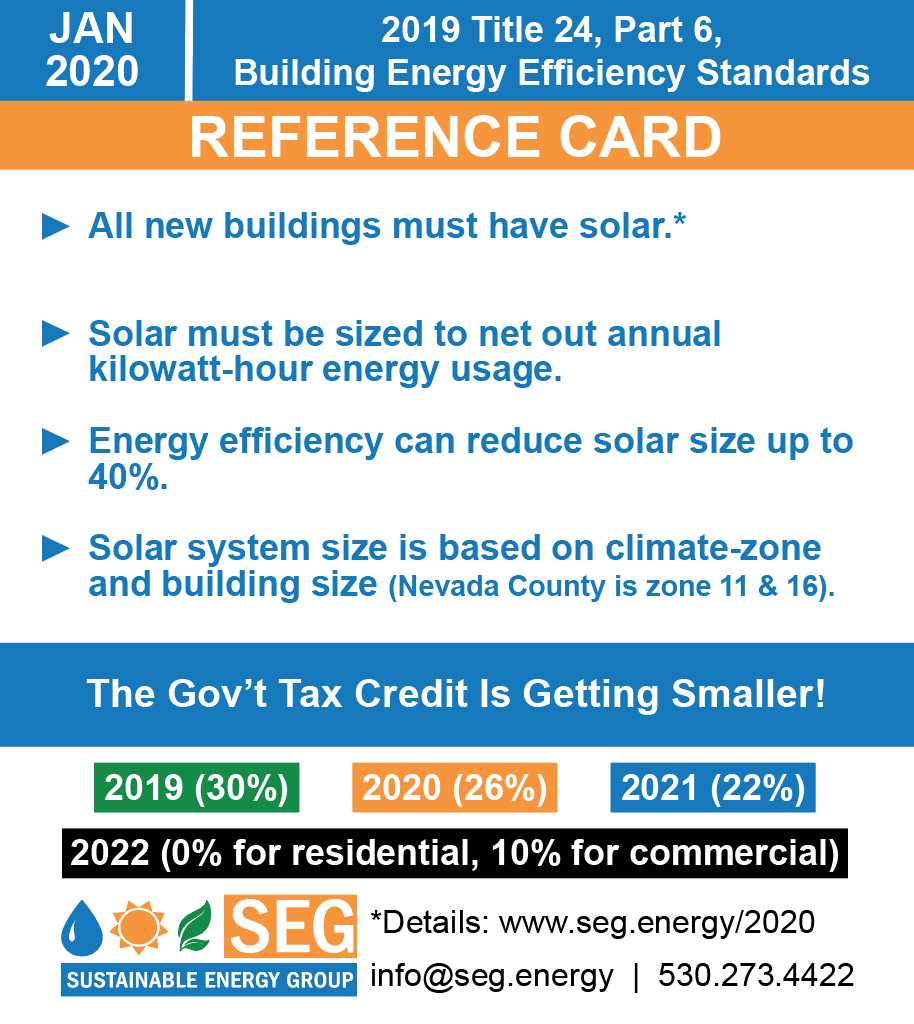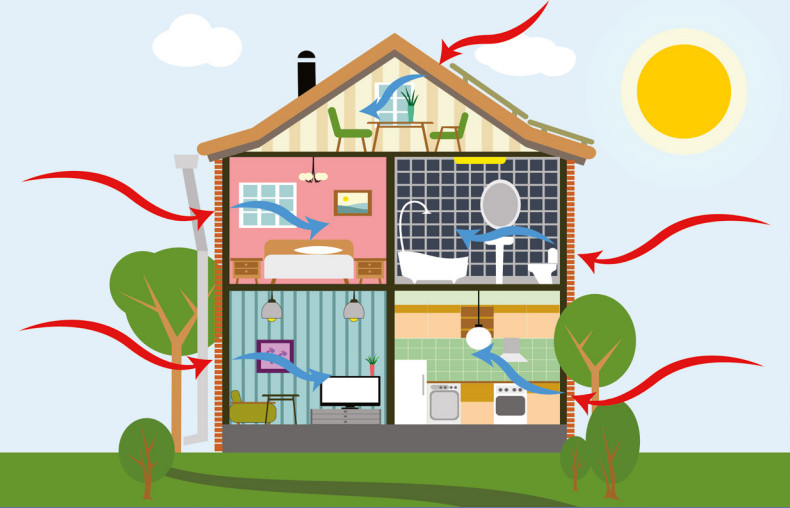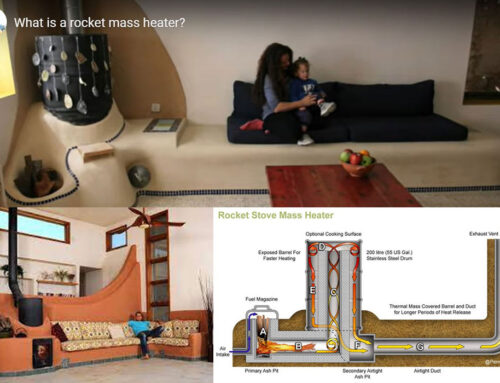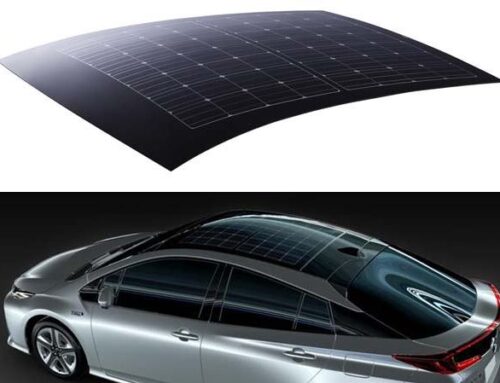California’s Leap in Building Standards


 Last May, the California Energy Commission (CEC) announced a ground-breaking update to the state’s building energy efficiency standards.
Last May, the California Energy Commission (CEC) announced a ground-breaking update to the state’s building energy efficiency standards.
Starting January 1, 2020, all new buildings in California must have solar.
The standards (according to Title 24, Part 6, Building Energy Efficiency Standards) also contain a number of energy efficiency updates that together with solar will cut energy use in homes by more than 50% and reduce greenhouse gas emissions associated with the building industry. Even though California has been updating standards with the intention of reducing greenhouse gas emissions to 40% below 1990 levels, this update comes as a surprise to many. It’s apparent that California is taking a quantum leap in building standards.
The state aims to “reduce greenhouse gas emissions by 700,000 metric tons over three years, equivalent to taking 115,000 fossil fuel cars off the road”, according to the California Energy Commission. This estimate is based only on adding solar to homes built under the 2019 standards. It doesn’t factor in energy efficiency for homes or new standards for commercial buildings, which will be expected to comply with similarly ambitious standards in future code updates.
For now, the 2019 standards apply to all new buildings as well as additions and alterations to existing ones. While the energy efficiency standards apply to both commercial and residential buildings, the solar photovoltaic requirement only pertains to residential.
Specifically, it mandates that single and multi-family residential buildings up to three stories tall are built with enough solar to offset annual energy needs.
The size of the solar system ultimately depends on the building’s floor area, location in terms of climate zone, and energy demand.
In California, there are 16 different climate zones that are based on temperature, not necessarily solar radiation, so energy demand for heating and cooling is important.
There are six exceptions to the 2019 standards that allow for the solar system to be reduced in size or, in some cases, eliminated entirely.
Certain exceptions may apply when energy efficient appliances and technologies are installed in the home. For example, single and multifamily homes may have a smaller solar system setup, if all thermostats have demand-responsive controls. Similarly, single-family homes with more than three habitable stories qualify for smaller systems. Other exceptions apply depending on solar access and shade.


 The standards are such that efficiency comes first, then solar, in order to avoid over generation of energy and reach zero net energy in California buildings especially in specifically in our Nevada County service area. Builders and developers are encouraged to improve efficiency cost-effectively through high performance attics, walls, windows, and lights alongside developing technologies such as battery storage and heat pump water heaters. Then comes designing an appropriate solar array to offset any remaining demand.
The standards are such that efficiency comes first, then solar, in order to avoid over generation of energy and reach zero net energy in California buildings especially in specifically in our Nevada County service area. Builders and developers are encouraged to improve efficiency cost-effectively through high performance attics, walls, windows, and lights alongside developing technologies such as battery storage and heat pump water heaters. Then comes designing an appropriate solar array to offset any remaining demand.
Who is responsible for designing and installing the solar system? How much does it cost? Who pays for it?
Builders and developers are responsible for complying with the 2019 standards and absorbing the costs of doing so. They can either work with a trusted solar company or take the solar design and install process in-house. Fortunately, incorporating solar into new homes at the start of construction is more economical than installing solar after the fact; the California Energy Commission notes that the new standards increase construction costs by $9,500, but will save $19,000 in energy and maintenance costs over a 30 year mortgage period (single page info sheet). In turn, the increased cost of homes will fall on homeowners and renters, however so too will the increased long-term savings.
Overall, the 2019 standards push sustainability to the next level via building electrification and self-sufficiency.
They flip the relationship between buildings and the power grid, turning homes into local energy producers as opposed to energy consumers and opening doorways for further advancements in the energy and building industry.
SOURCES
California Energy Commission
Building Energy Efficiency Standards – Title 24
Building Energy Efficiency Standards for Residential and Nonresidential Buildings
Frequently Asked Questions: 2019 Building Energy Efficiency Standards
2018_Title_24_2019_Building_Standards_FAQ.pdf
2018 – Title 24 2019 Residential Standards.pdf
California Energy Maps: CA Building Climate Zone Areas
California Public Utilities Commission
News
LA Times | Starting in 2020, all new homes must come with solar panels. Builders are getting ready.
Greentech Media | Everything You Need to Know About California’s New Solar Roof Mandate
Greentech Media | California’s Rooftop Solar Mandate Wins Final Approval
In Northern California solar and energy efficiency it’s important to understand what policies are in effect like Net Metering in California, the tax credit decreases and in this case the Title 24, Part 6, Building Energy Efficiency Standards for California mandating that all new buildings in CA must have solar to sized to net out annual KW energy usage. This effects our area and solar installations in Grass Valley, Nevada City, Penn Valley, Auburn, North San Juan and Lake Wildwood, as well solar energy systems installed by our solar company in Nevada County, Placer, Yuba and El Dorado County.




